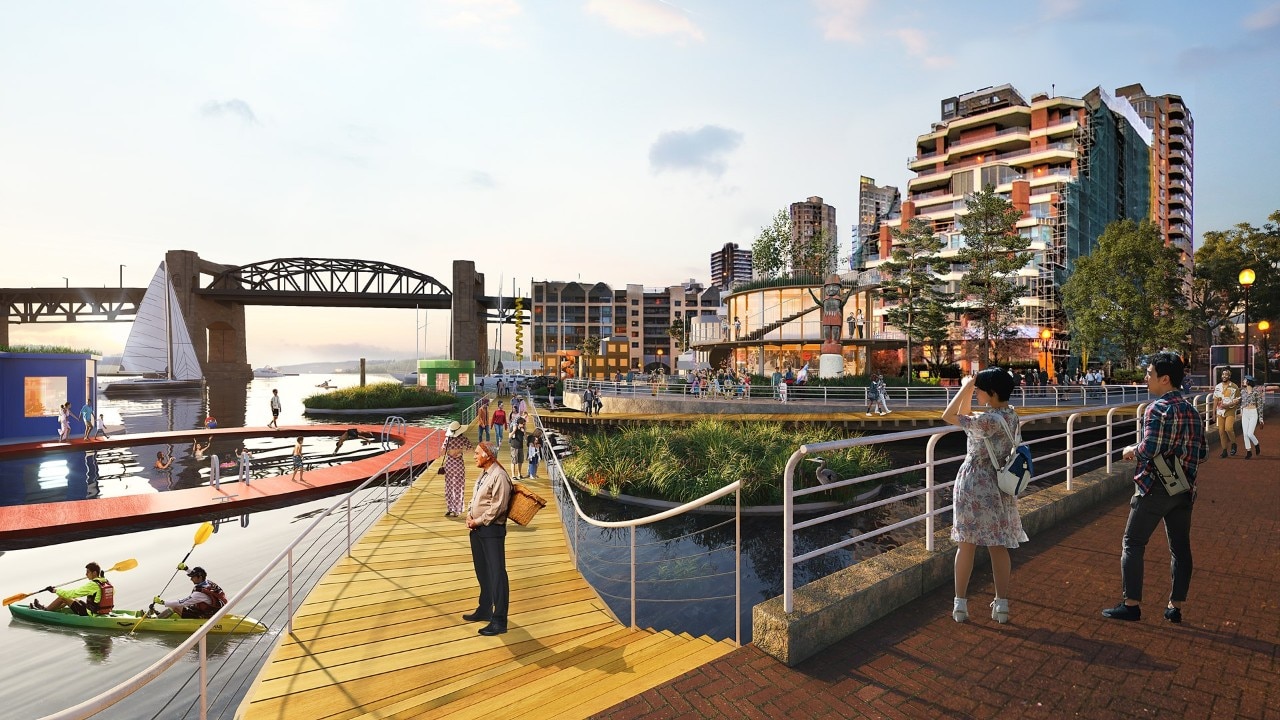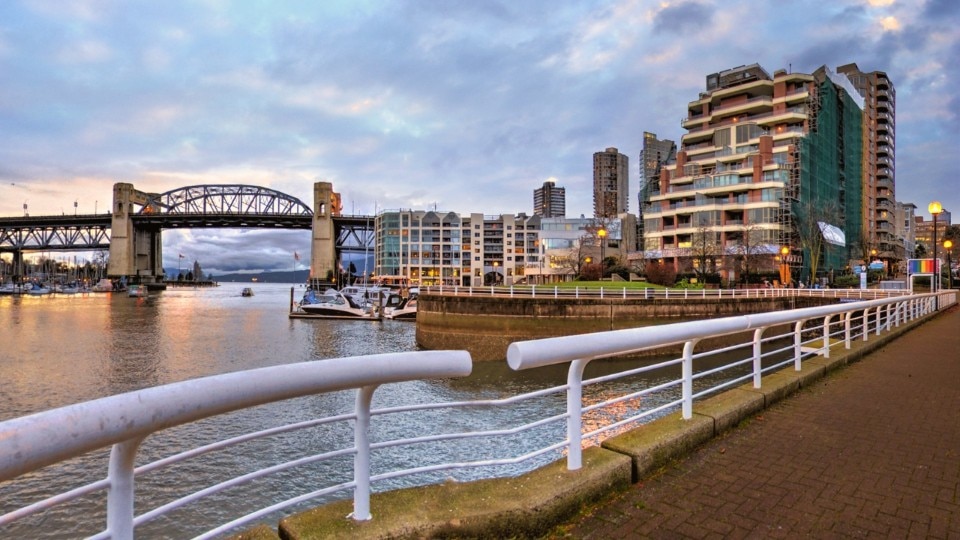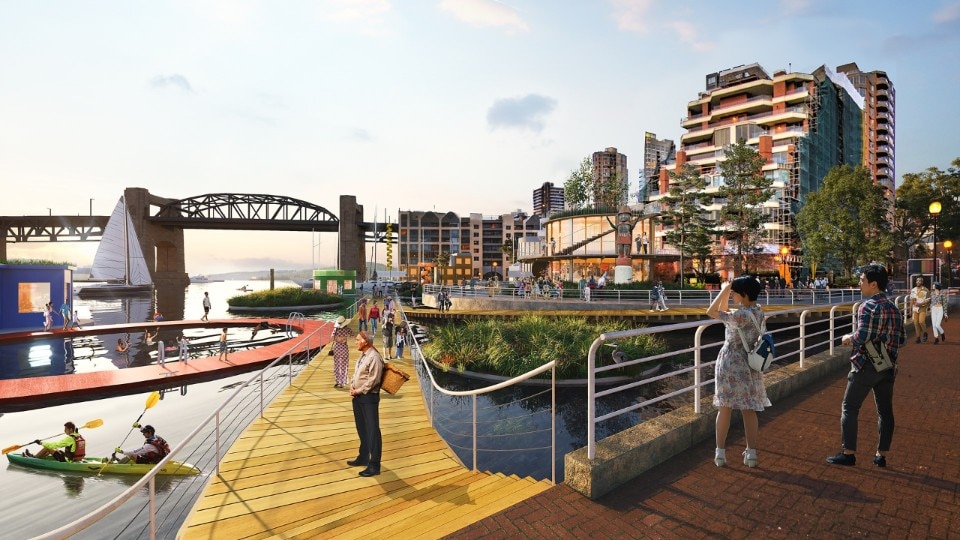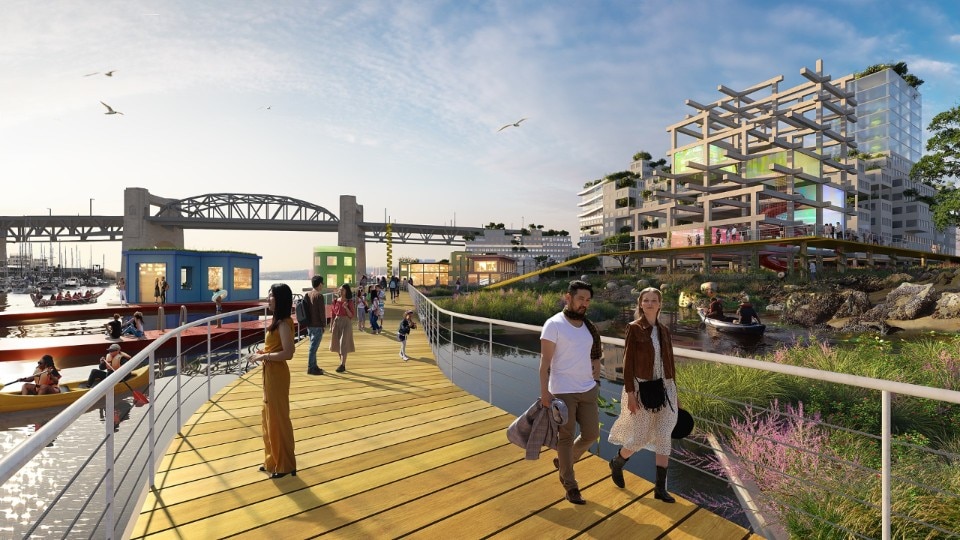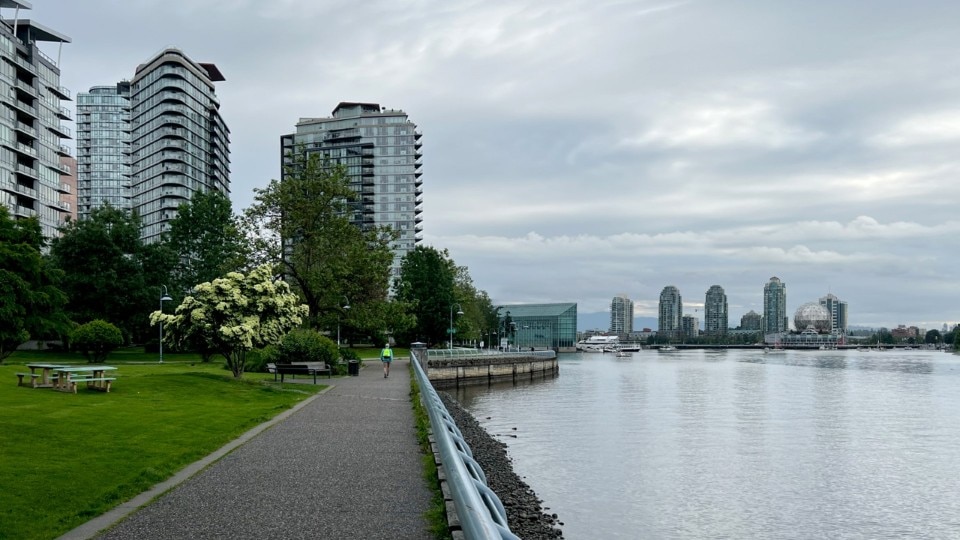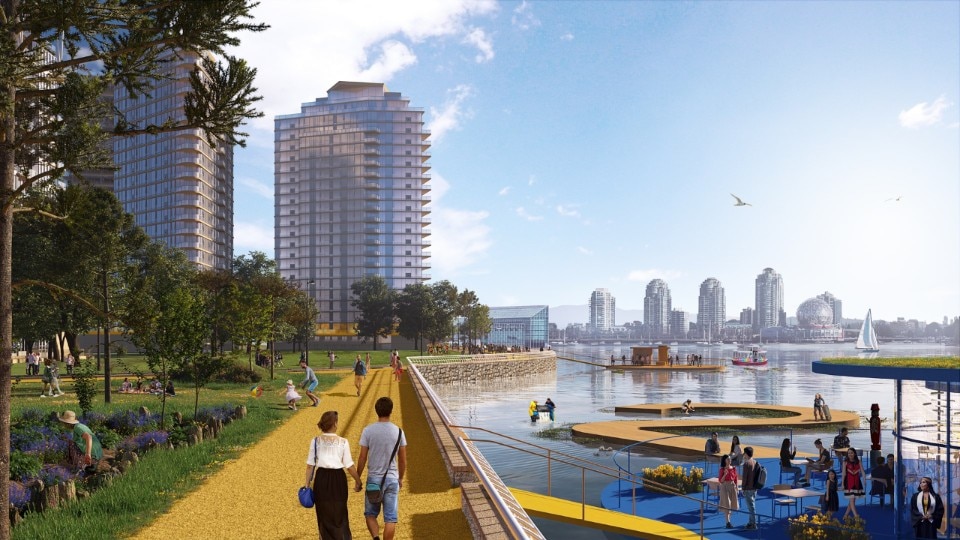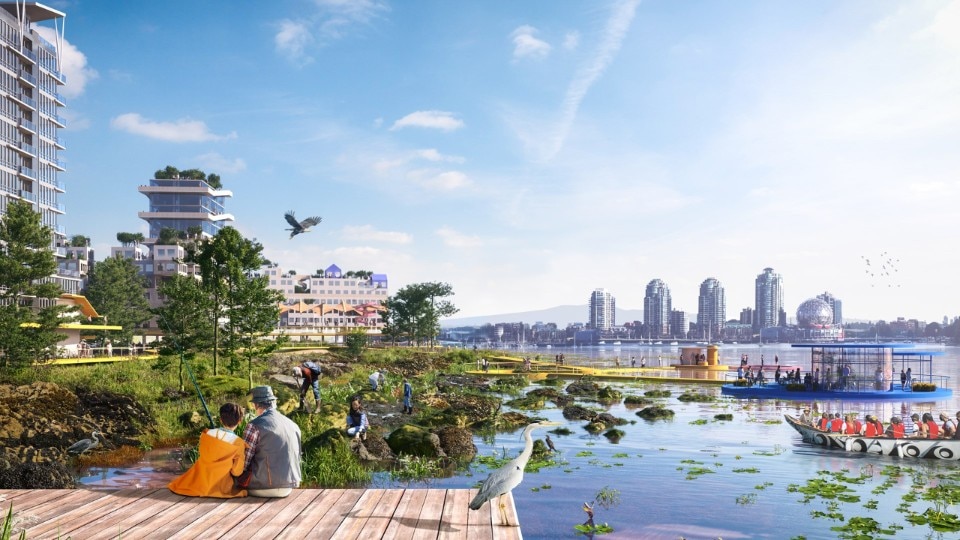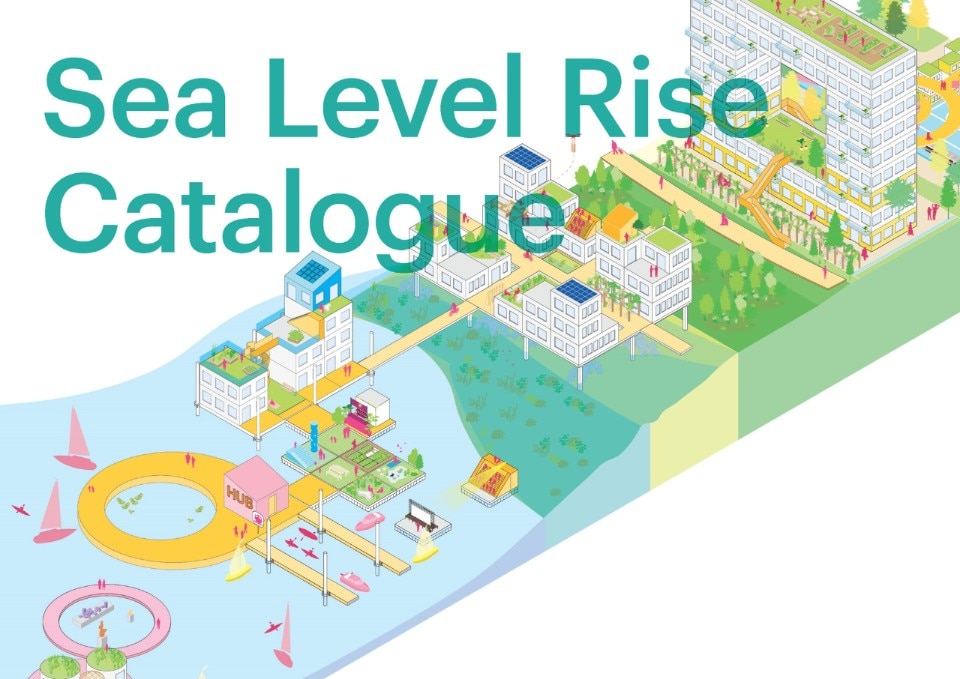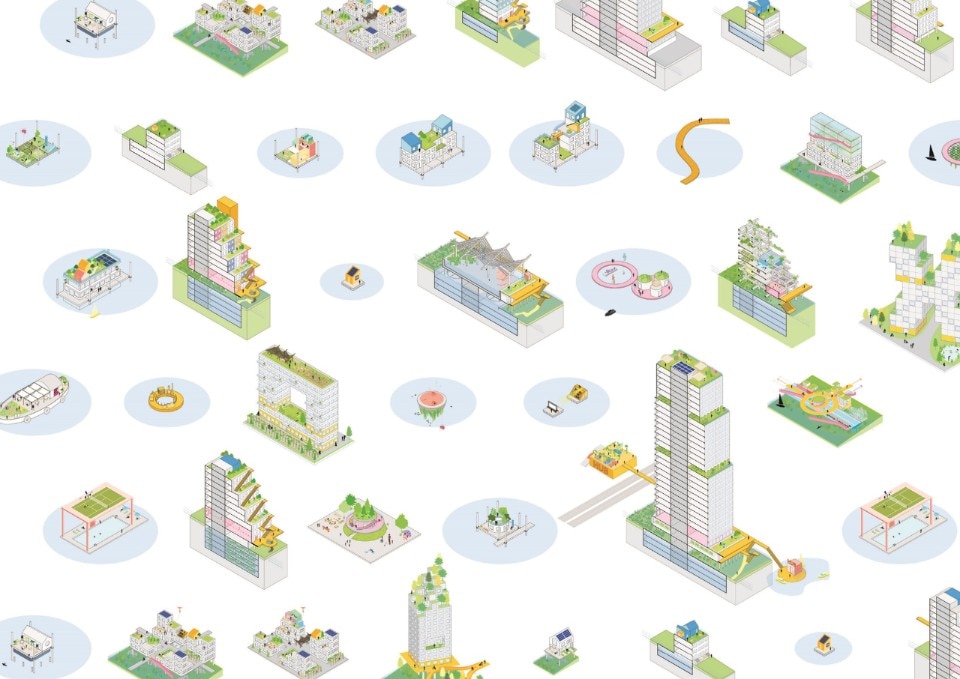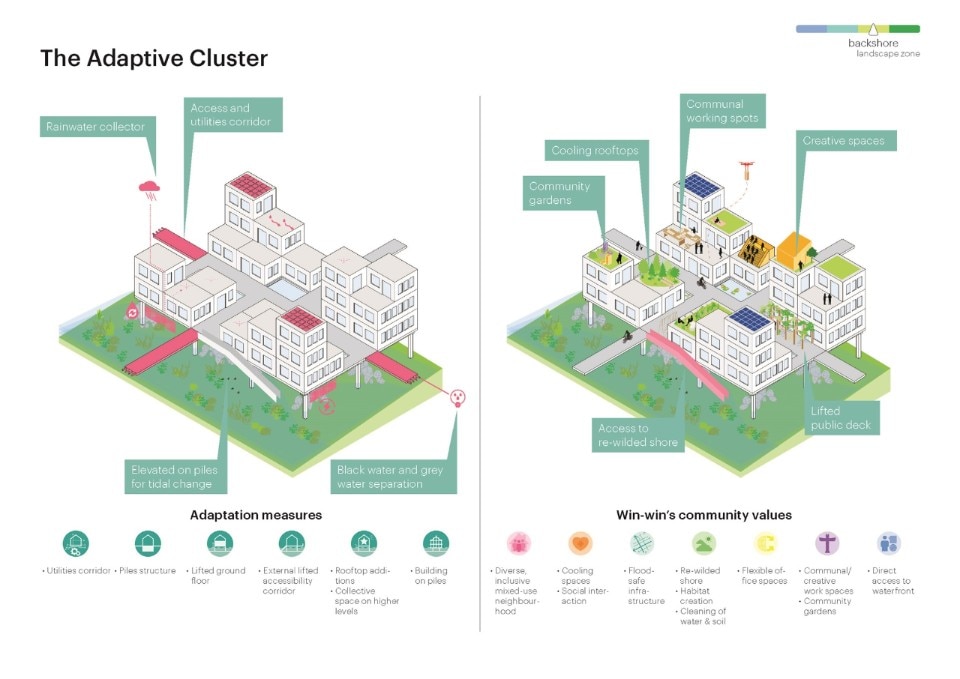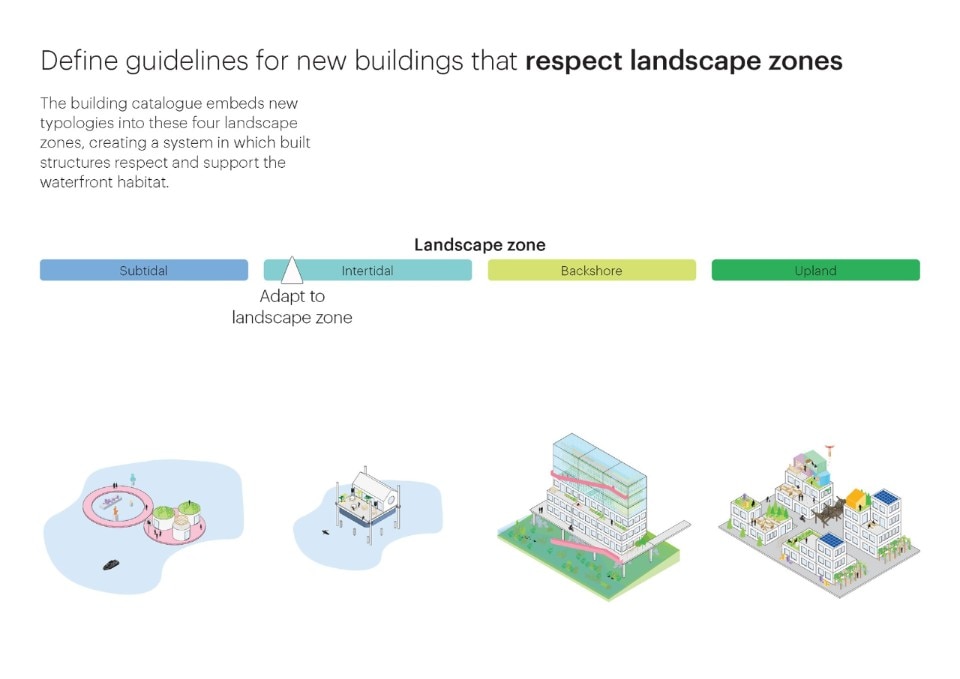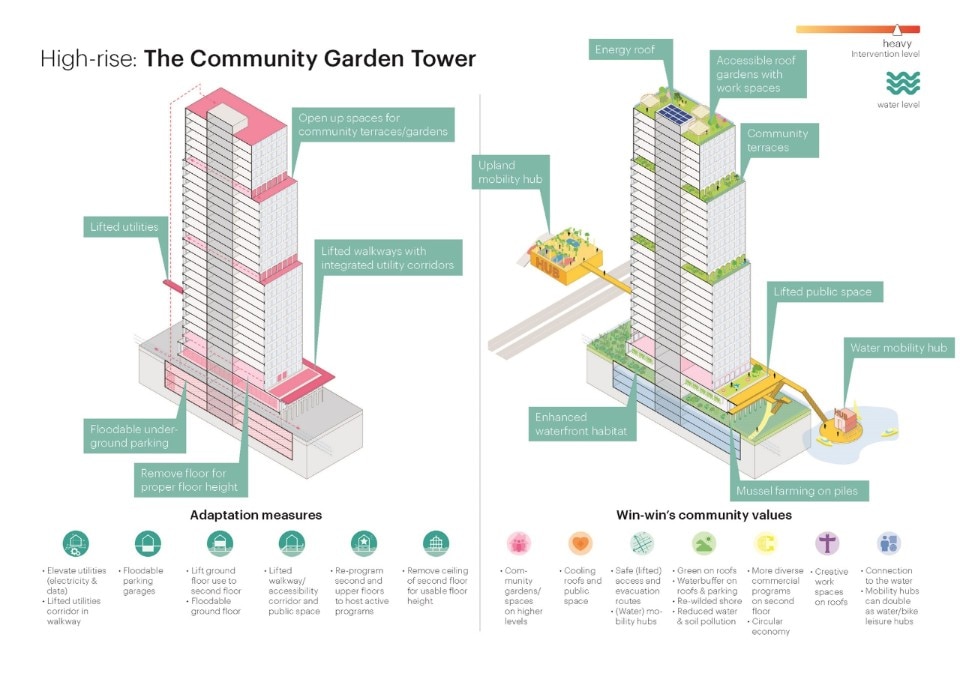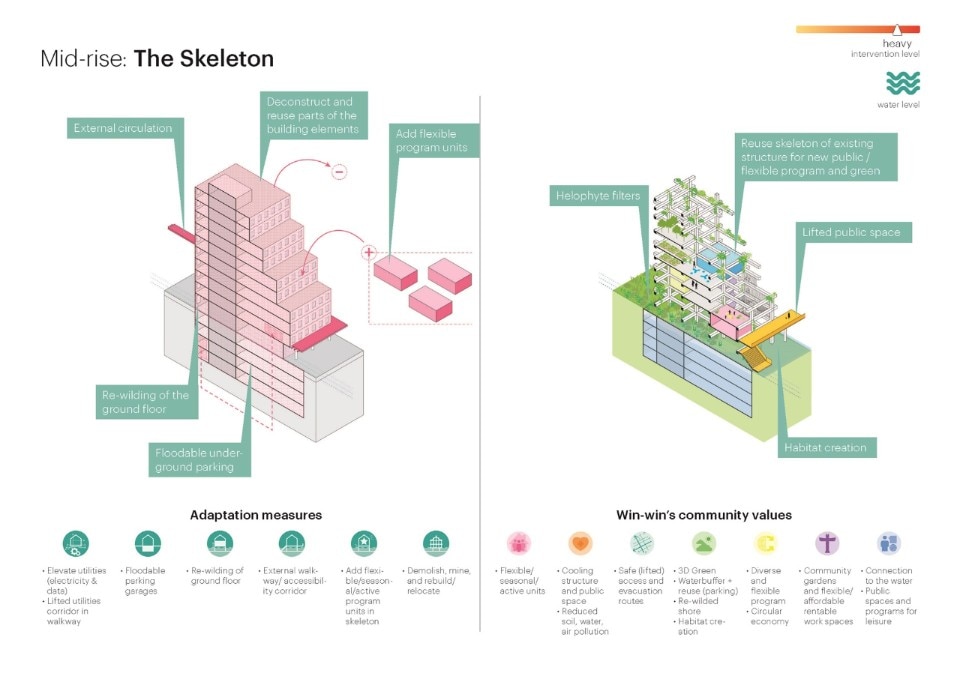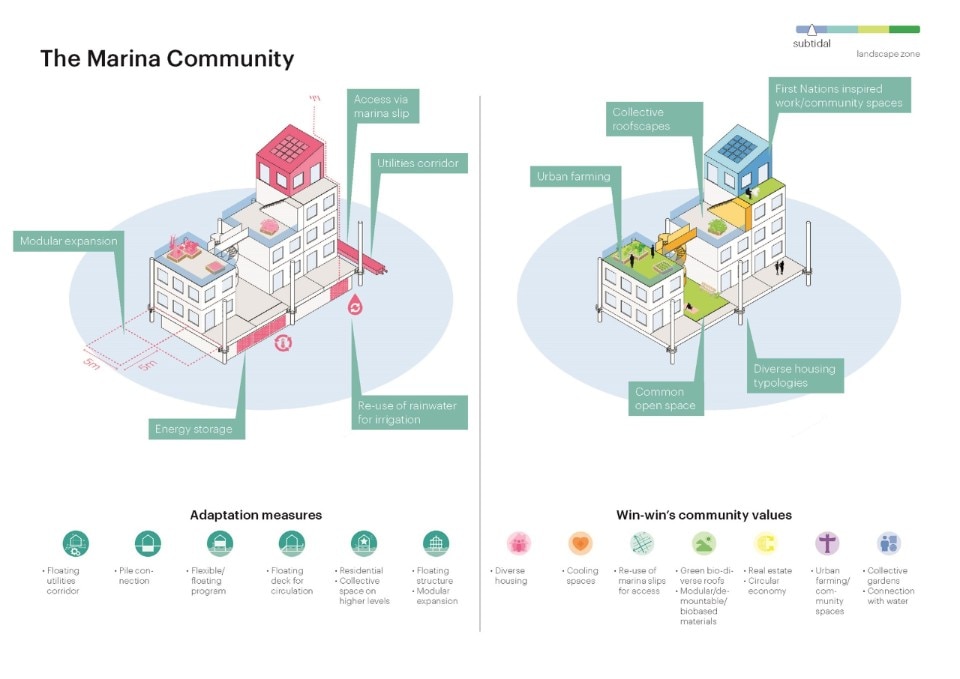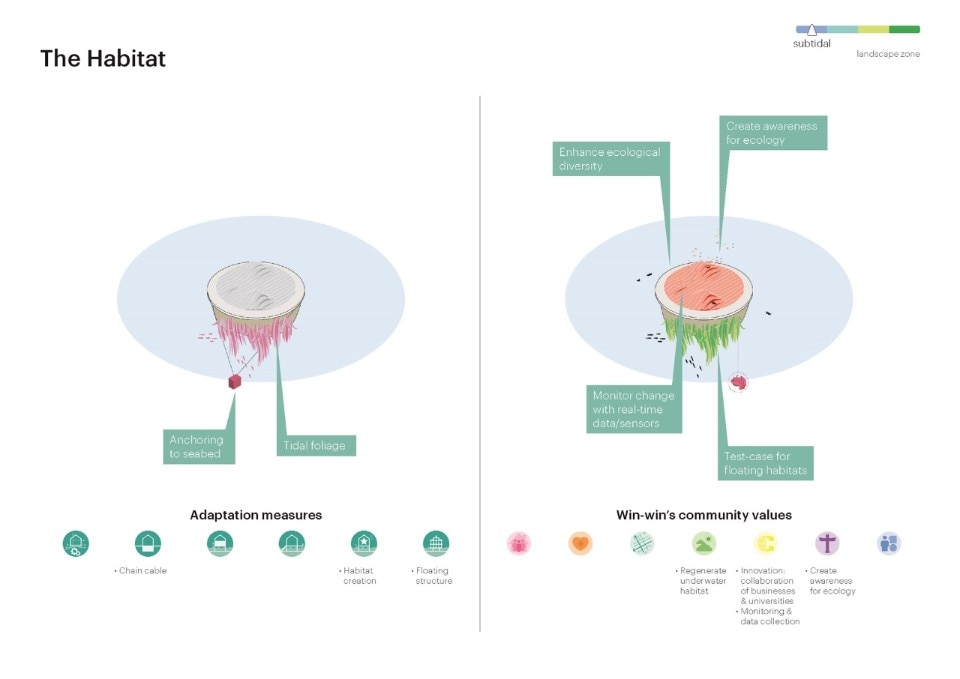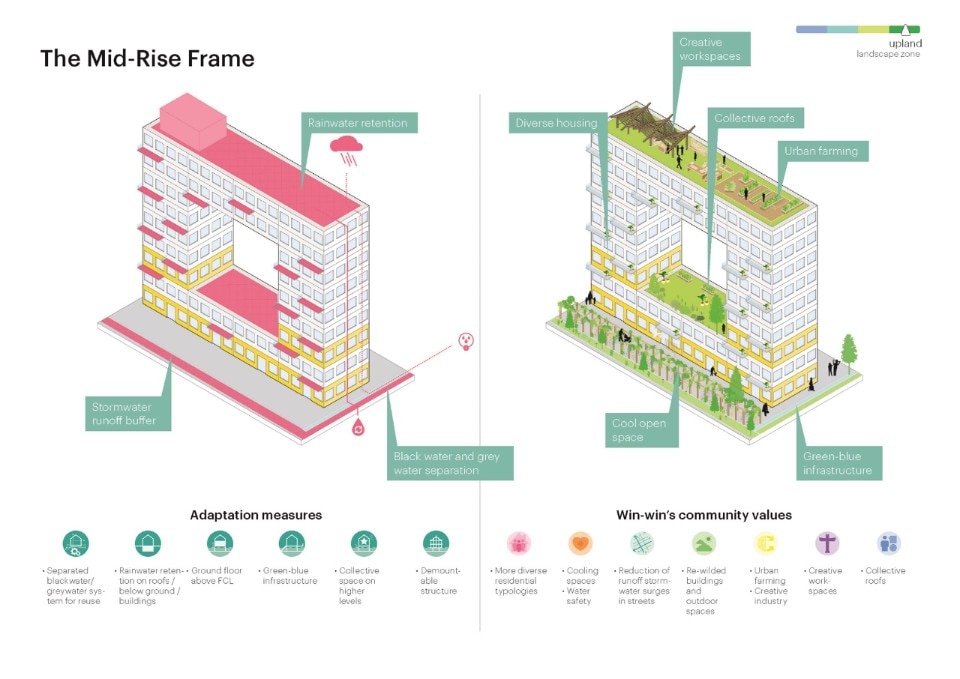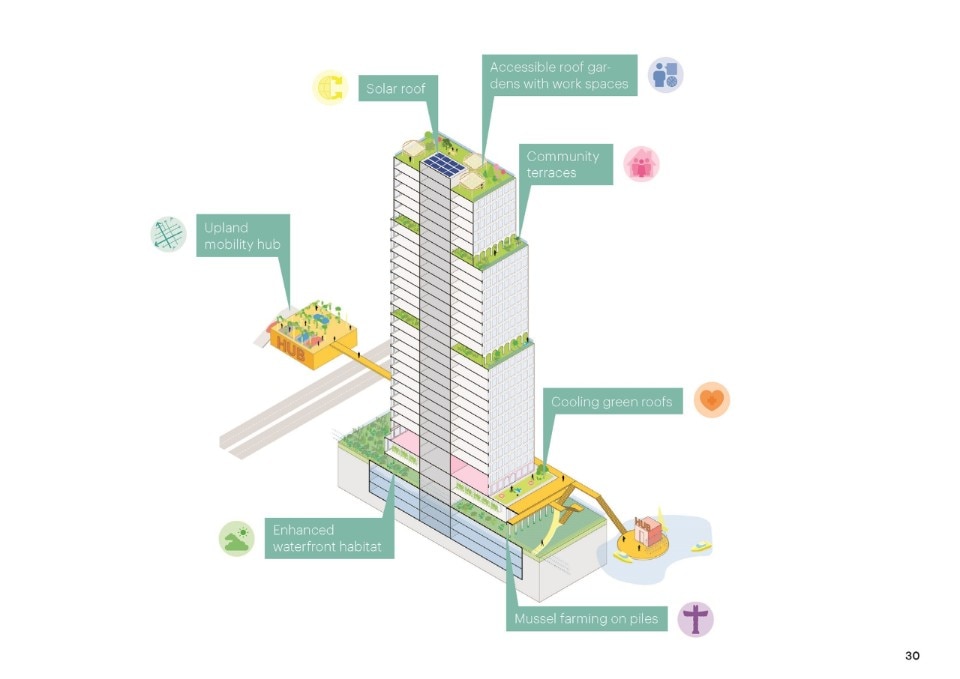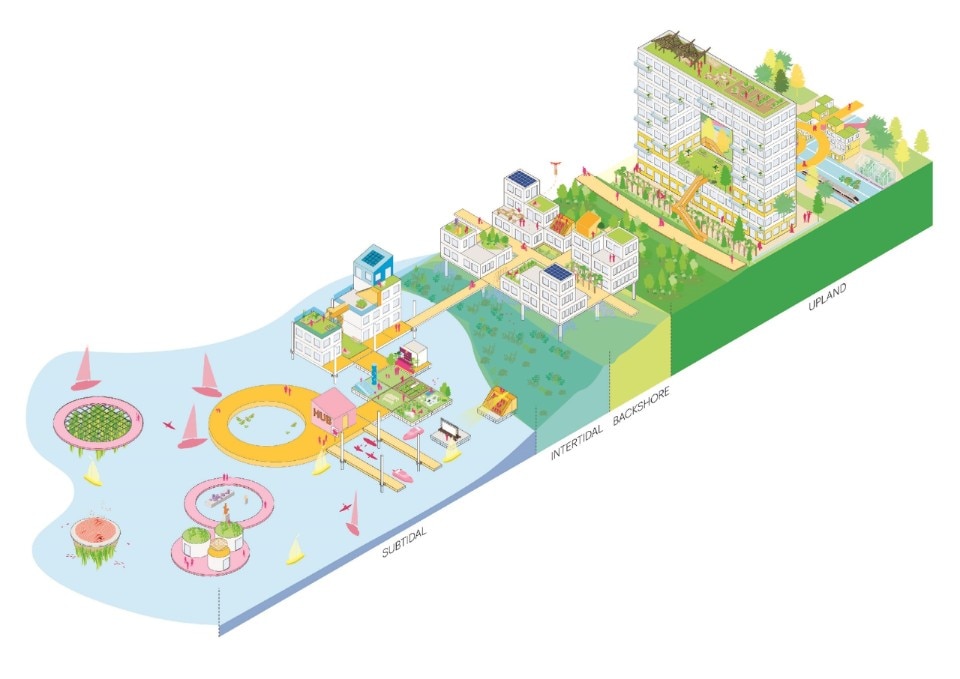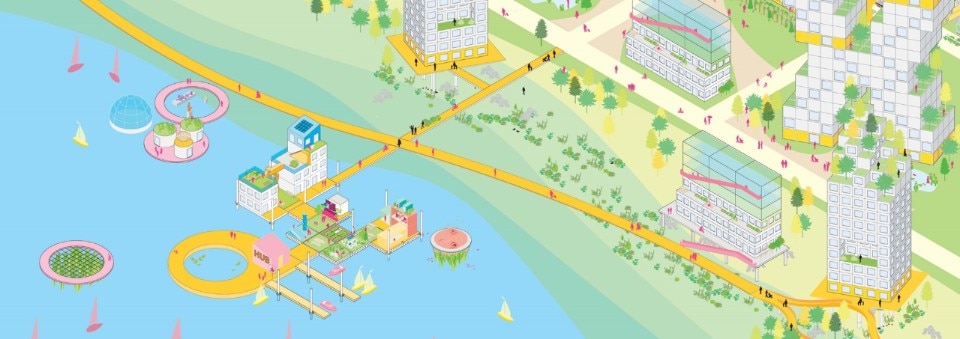Organized by the City of Vancouver, Sea2City Design Challenge is a research team invited to define a framework and vision to guide urban development and ecological revitalization of the False Creek floodplain. The diverse design team- PWL Partnership Landscape Architects, Deltares, and Modern Formline Design- worked specifically on long-term proposals for the Between Bridges and Coopers' Park areas, strategic points for a broader rethinking of the waterfront area in anticipation of a 2100 vision.
Fundamental to the team's proposals is the recognition that traditional approaches to urban waterfronts, which regulate their relationship to water through rigid infrastructure, are no longer effective in an era of rising sea levels and increasingly frequent extreme weather events.
By analyzing historical and existing conditions, the team demonstrated how the site's water edge detects minimal space dedicated to the intertidal zone-the land between high and low, tide-decreasing the area available for seasonal flooding or extreme weather events.
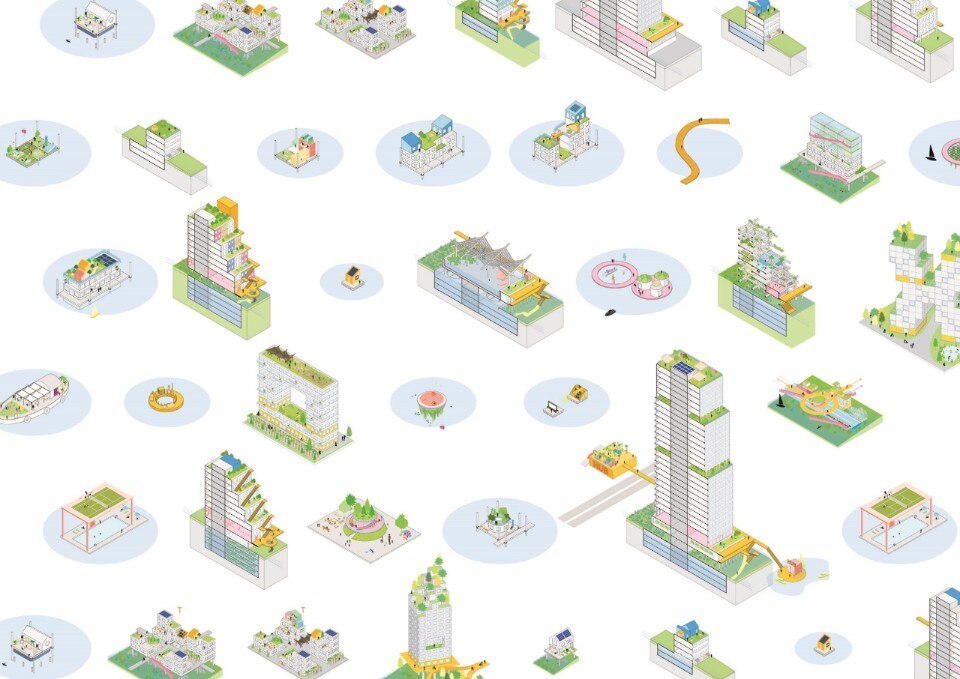
With this challenge in mind, the Dutch architectural firm MVRDV has joined the research and has been asked to collaborate with Sea Level Rise Catalogue, a project that examines ways to adapt to sea level rise, which the IPCC says could rise up to two meters by 2100. The proposal uses six basic principles to make these changes possible, both in adapting existing structures and in building new ones: upgrading utilities and raising some of them above water level; finding new flood-proof uses for underground structures; raising the ground floor of buildings; developing elevated walkways to connect structures; reorganizing building programs and making them more flexible; and adapting structures to allow for changes in use, as well as designing new structures to be more easily adapted.
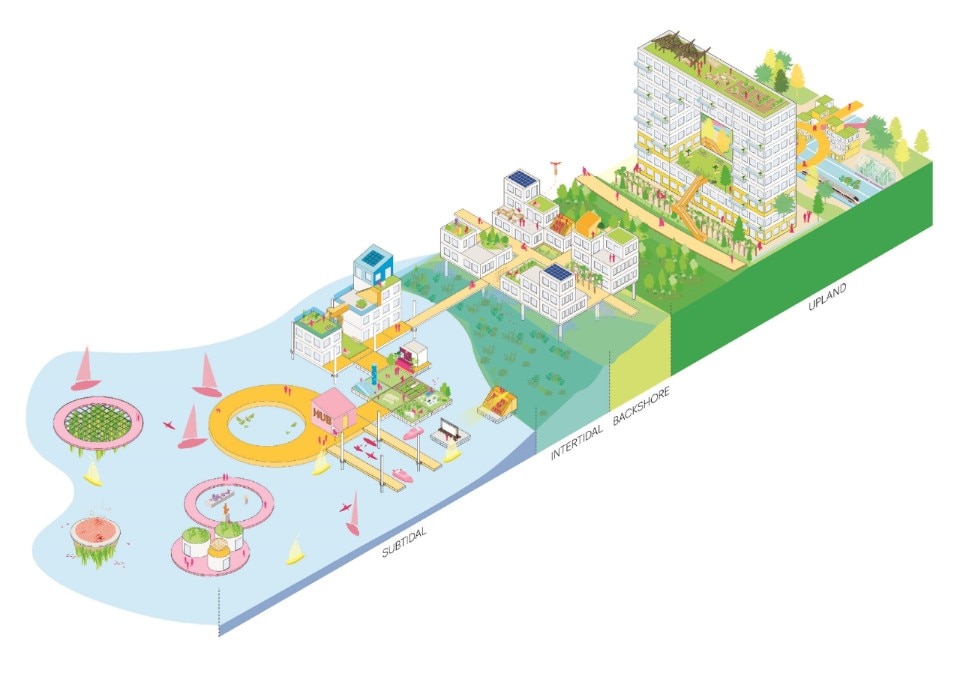
Expanding on the proposal, MVRDV has developed a catalog with a strategy for both new buildings and the transformation of individual existing structures. The extensive catalog includes vertical extensions of flood-adapted townhouses with community terraces, such as floating habitat islands and high-rise buildings reduced to their structural skeleton to accommodate flexible public programs. Each item in the catalog, moreover, is ranked according to the place it may occupy in the future city, assigning a position concerning the redeveloped coastal landscape, with some that will be located permanently on the water, others that will occupy the intertidal zone and still others that will be located on land, out of the expected reach of the sea. In the case of the transformation of existing buildings, proposals are ranked according to the degree of the drama of the intervention and the amount of sea level rise they can accommodate.


